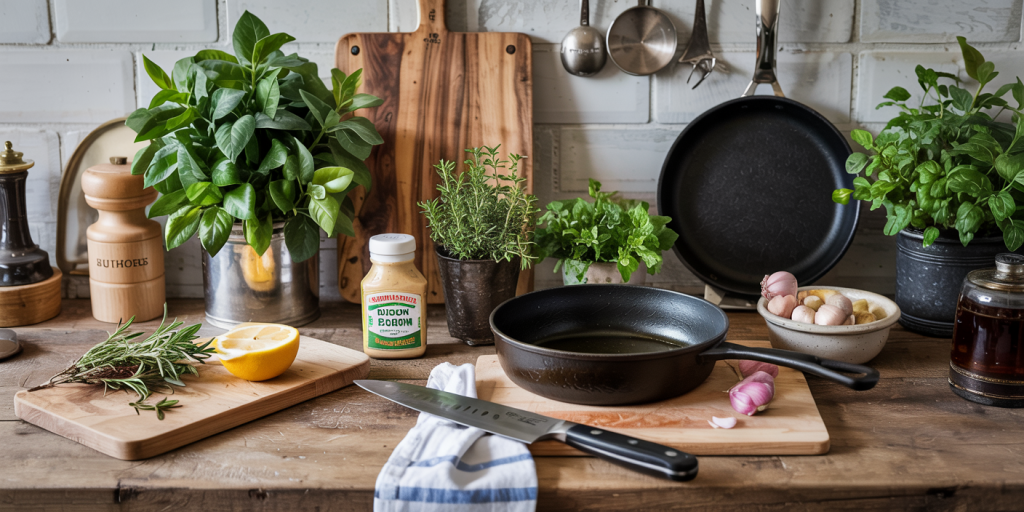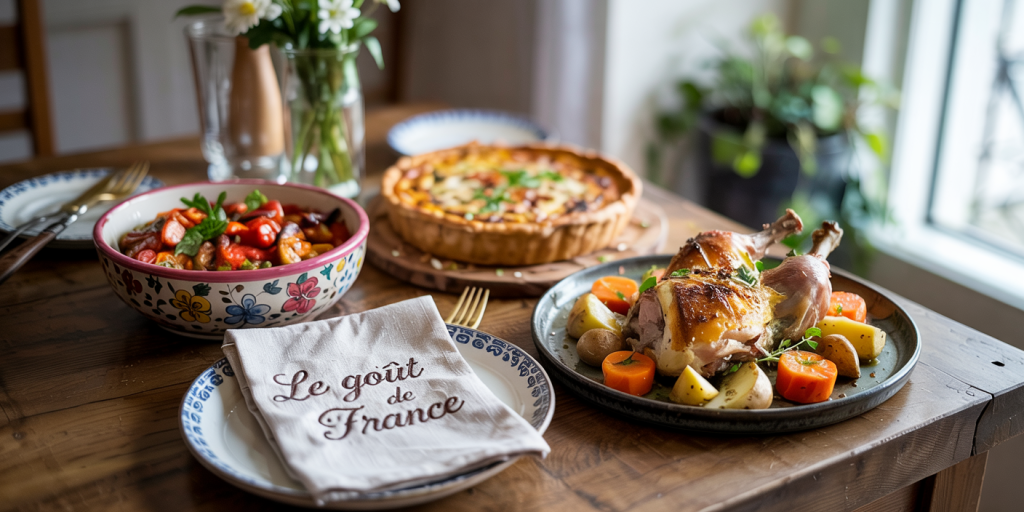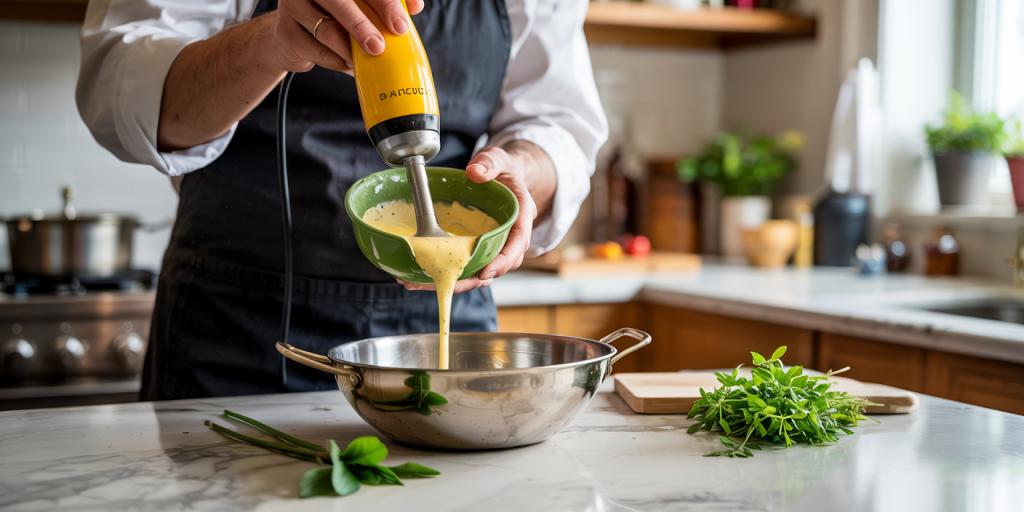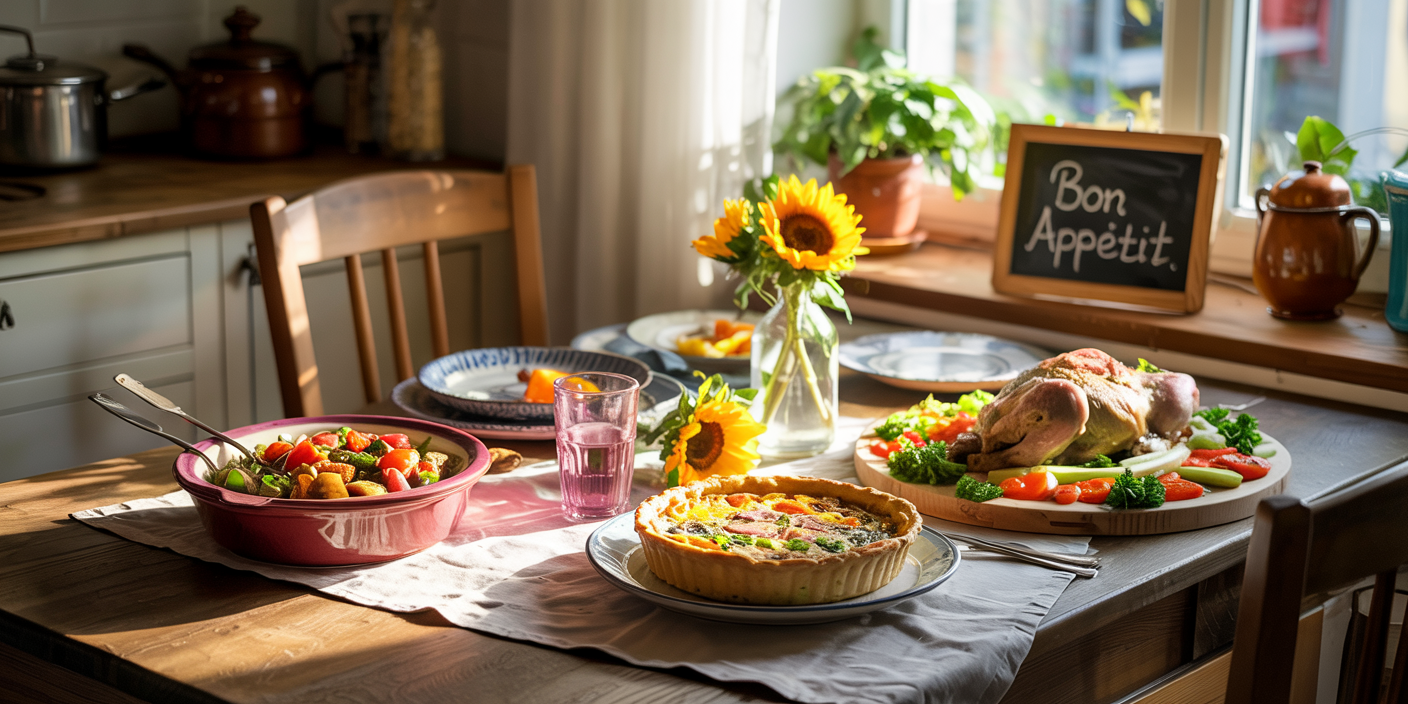French cuisine, renowned for its elegance and precision, holds a cherished place in the culinary world. Despite its reputation for complexity, many classic French recipes can be simplified without sacrificing authenticity or flavor. This article explores how to approach timeless French dishes with easy-to-follow techniques, practical examples, and comparative insights. Whether you are a novice cook or an enthusiast looking to refine your skills, mastering these dishes can elevate your home dining experience and deepen your appreciation for French gastronomy.
Understanding the Essence of Classic French Cooking
French cuisine is characterized by its emphasis on fresh, quality ingredients, balanced flavors, and meticulous preparation methods. From the buttery richness of a croissant to the robust depth of a Boeuf Bourguignon, these recipes reflect the regional diversity and historical evolution of France’s culinary traditions. However, the perception that French cooking is inaccessible or overly complicated often deters home cooks.
Recent studies by the National Restaurant Association highlight that nearly 40% of home cooks avoid French recipes due to perceived difficulty and time constraints. Yet, many foundational French dishes rely on simple techniques such as slow braising, precise seasoning, and harmonious layering of flavors. By understanding these principles, cooks can navigate French recipes confidently and create dishes that impress without overwhelming.
Classic French recipes are often built around foundational “mother sauces,” essential flavor bases that can transform a dish. Familiarity with these sauces—béchamel, velouté, espagnole, hollandaise, and tomato sauce—provides both flexibility and depth in cooking. Learning to prepare and use them effectively is a critical step in demystifying French cuisine.
Essential Equipment and Ingredients for Simplified French Recipes
To make classic French recipes approachable, it is important to equip your kitchen with basic yet effective tools and gather essential ingredients known for their quality and versatility. While professional French chefs might use a wide range of gadgets, much can be achieved with just a few staples.
A sturdy chef’s knife, a cast-iron skillet or heavy-bottomed pan, a sauté pan, and a good-quality saucepan form the backbone of French cooking utensils at home. Investing in an instant-read thermometer can also prevent overcooking, particularly for meats and delicate sauces.
When it comes to ingredients, French cooking emphasizes fresh produce, unsalted butter, high-quality olive oil, fresh herbs, and well-sourced proteins. Classic items such as Dijon mustard, shallots, garlic, fresh thyme, and bouquet garni (a bundle of herbs) allow you to create authentic flavors with ease. For example, using freshly made bouquet garni instead of pre-packaged herbs can dramatically enhance the flavor of stews like Coq au Vin without adding complexity.

Table 1 below summarizes the must-have ingredients and tools for simplified classic French recipes:
| Equipment/Ingredient | Purpose | Tips for Simplification |
|---|---|---|
| Chef’s Knife | Chopping and slicing | Regular sharpening for efficiency |
| Cast-Iron Skillet | Searing, frying, slow cooking | Retains even heat for braising |
| Sauté Pan | Quick cooking and sautéing | Non-stick options for easier cleanup |
| Unsalted Butter | Flavor base and finishing | Use European-style for richer taste |
| Fresh Herbs | Aromatics and seasoning | Grow your own for freshness and cost |
| Dijon Mustard | Sauce enhancement | Substitute whole-grain for texture |
| Bouquet Garni | Flavor infusion in stews and stocks | Make homemade blends to control flavor |
Mastering the use of these tools and ingredients enables cooks to focus on flavor building and technique rather than complex preparation steps.
Classic French Entrées Made Simple
Many classic French entrée recipes are rooted in rustic, hearty preparations that naturally lend themselves to simplification. Dishes such as Ratatouille, Quiche Lorraine, and Poulet Rôti (roast chicken) can be recreated at home with manageable steps and accessible ingredients.

Take Ratatouille, a vegetable stew from Provence traditionally simmered slowly. By using a pressure cooker or an Instant Pot, the lengthy cooking times (often 2-3 hours) can be reduced significantly, preserving the nuanced flavors of zucchini, eggplant, bell peppers, and tomatoes. This modern adaptation makes it possible to enjoy the classic medley in under an hour—a practical advantage for busy home cooks.
Quiche Lorraine, another classic, uses a simple mix of eggs, cream, cheese, and bacon encased in a shortcrust pastry. To simplify, consider using pre-made pastry crusts and substitute heavy cream with full-fat milk for a lighter texture without compromising taste. This saves preparation time while maintaining the rich, creamy character essential to Quiche Lorraine.
Poulet Rôti exemplifies the French love for perfectly roasted chicken. Achieving a moist and flavorful roast involves trussing the bird, seasoning well, and using moderate oven temperatures to cook evenly. A practical tip is to roast the chicken on a bed of aromatic vegetables, which doubles as a side and infuses the meat with flavor. Additionally, baste occasionally with pan juices to enhance crispness and moisture.
By focusing on essential techniques—proper seasoning, temperature control, and appropriate cooking vessels—cookbooks such as Julia Child’s _Mastering the Art of French Cooking_ demonstrate how these dishes can be approachable without losing authenticity.
Simplified French Sauces and Their Everyday Usability
Sauces are the heartbeat of many French recipes, elevating even the simplest ingredients into memorable dishes. While making traditional sauces can be intimidating, simplifying techniques and utilizing kitchen aids can make this fundamental skill accessible.
For example, a classic Béarnaise sauce requires careful temperature management to emulsify egg yolks and butter, often cited as a challenge for home cooks. However, modern immersion blenders streamline the process, allowing consistent results with minimal effort. This sauce typically accompanies grilled meats and vegetables, adding freshness and richness.

Espagnole, or brown sauce, forms the base for many complex French sauces but traditionally requires long reductions and brown roux preparation. As a shortcut, many cooks use store-bought demi-glace, a concentrated brown sauce, as a base, enhancing it with fresh herbs and reduced wine for a quick yet authentic touch.
Table 2 highlights the time and complexity comparison between traditional and simplified sauce preparation methods:
| Sauce | Traditional Preparation Time | Simplified Method | Flavor Outcome |
|---|---|---|---|
| Béarnaise | 20-30 minutes | 10 minutes with immersion blender | Smooth, stable emulsion |
| Espagnole | 3-4 hours | 30 minutes using demi-glace base | Rich, complex, slightly less depth |
| Béchamel | 20 minutes | 10 minutes with pre-made roux mix | Creamy and versatile |
Adopting these modern aids and shortcuts supports incorporating French sauces into daily meals, making the cuisine more approachable while preserving its characteristic sophistication.
French Desserts Made Manageable
French desserts are one of the most celebrated aspects of the cuisine, ranging from delicate pastries to rich custards. Classic sweets like Crème Brûlée, Tarte Tatin, and Madeleines are often viewed as time-consuming but can be simplified with thoughtful techniques and modern kitchen appliances.
Crème Brûlée, with its silky custard and caramelized sugar topping, traditionally requires baking in a water bath and torching the sugar. Using silicone ramekins and a kitchen blowtorch enables even heating and a perfectly caramelized surface with minimal hassle. Some home cooks opt for a microwave step to reduce baking time, although results vary.
Tarte Tatin, a caramelized upside-down apple tart, depends on achieving a balance between soft fruit and crisp pastry. Utilizing pre-made puff pastry removes the labor-intensive dough-making step while maintaining excellent flavor and texture. Cooking apples in butter and sugar caramel for about 20 minutes before baking allows flavors to develop without overcomplication.
Madeleines, small sponge cakes with a signature shell shape, gain their light texture from careful folding and batter resting. Stand mixers and springform pans shorten preparation and ensure consistency. Additionally, replacing lemon zest with orange zest can offer a twist on classic flavor profiles while maintaining simplicity.
These streamlined methods have helped elevate French dessert baking as a feasible home activity, encouraging experimentation and enjoyment beyond patisserie shops.
Future Perspectives: Modernizing French Culinary Traditions
The future of French cooking lies in blending tradition with innovation, making its rich culinary heritage more accessible and sustainable. As dietary preferences evolve, chefs and home cooks are adapting classic recipes to accommodate veganism, gluten-free diets, and health-conscious tendencies.
For example, vegan versions of coq au vin substitute mushrooms and plant-based wines to replicate flavors traditionally reliant on meat and alcohol. Similarly, gluten-free adaptations of quiches and tarts use almond or chickpea flour substitutions for crusts, opening the cuisine to a broader audience.
Technological advances like sous-vide cooking offer precise temperature control, ensuring meat dishes like duck confit achieve perfect tenderness consistently. Apps and online platforms provide guided recipes with step-by-step video instructions, democratizing access to French culinary expertise.
Research indicates that younger generations prioritize cooking experiences that balance flavor with convenience and health (Mintel’s 2023 Food Trends Report). Consequently, classic French recipes are being reinterpreted with an emphasis on ease, nutritional balance, and sustainability. This evolution not only preserves the tradition but also propels it into wider cultural relevance.
In summary, the pathway to mastering classic French recipes lies in embracing simplicity without compromising authenticity. Incorporating practical shortcuts, investing in essential tools, and adapting to modern lifestyles will enable more cooks to bring the timeless elegance of French cuisine into their own kitchens confidently.

Deixe um comentário